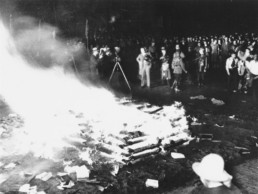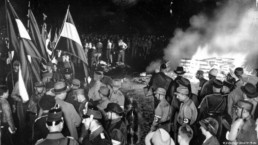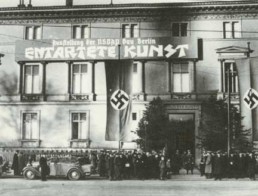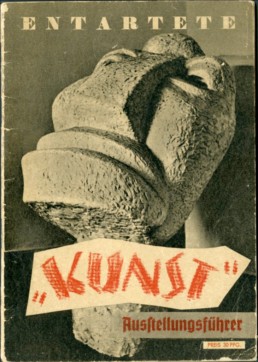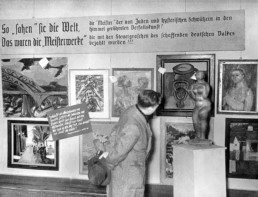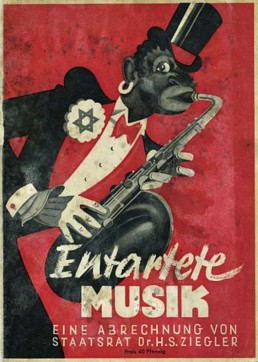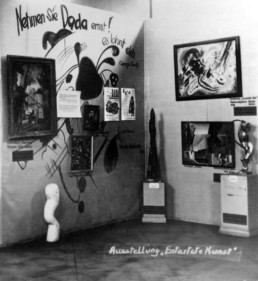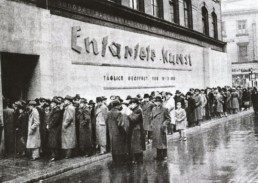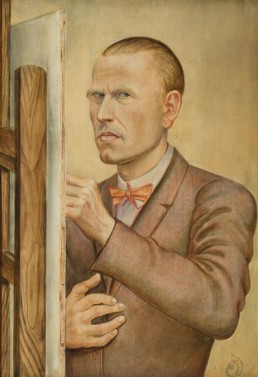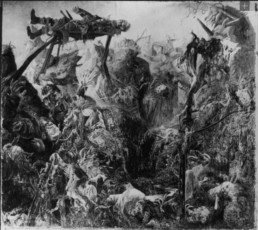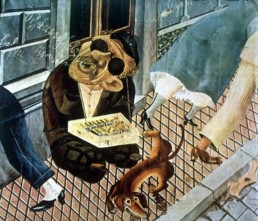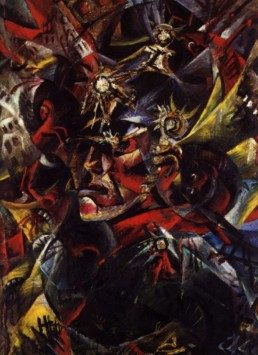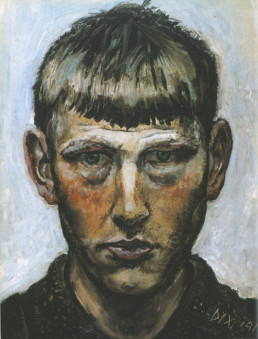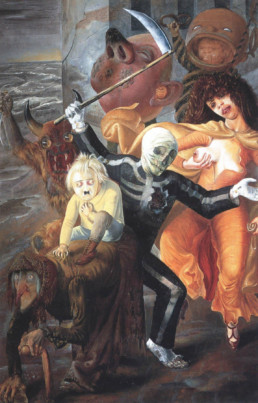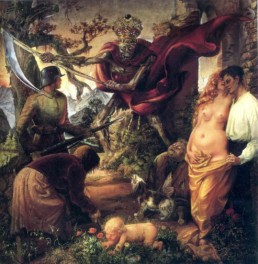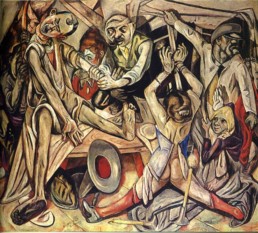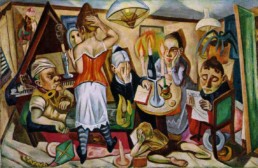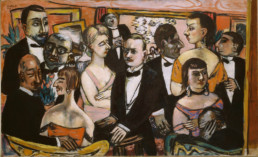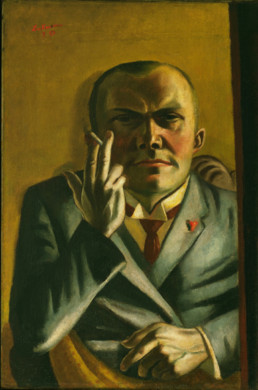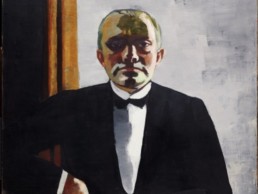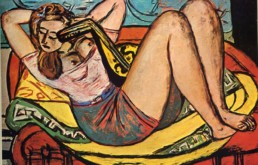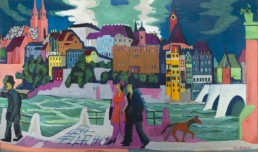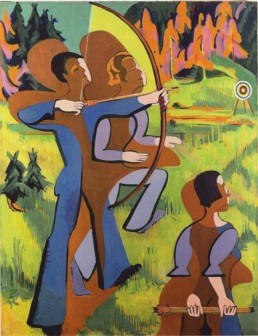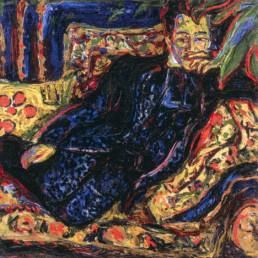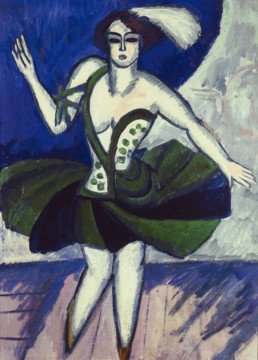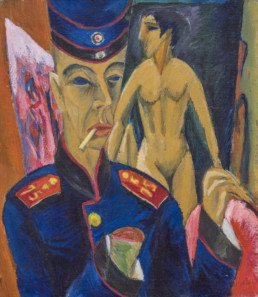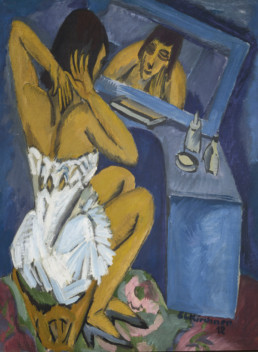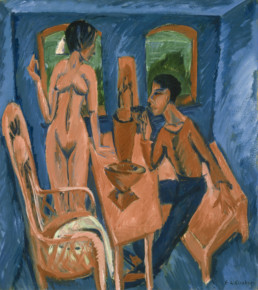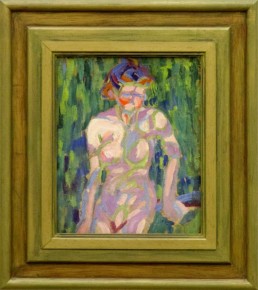ART IS DANGEROUS: Nazi Degenerate Art Exhibition
When the Nazi Party came to power in Germany, in 1933, one of their first goals was to reshape culture by force. The Nazis organized book burnings, stormed artist studios, confiscating work they disagreed with, and fired contemporary artists from teaching positions in universities.
The goal was to place limits on human expression–an ominous display for what was to come. The celebrated German poet, Heinrich Heine, (whose books were also in the fire pits) wrote this in 1821: “where books are burned, there too, people will burn.”
A prophetic statement for what was to come.
The war against art–which was really a war against human expression–was an early symptom that there was something desperately wrong in Germany, it was a way of forcing compliance in the public.
And so, we face the question: What makes art so dangerous?
It seems that the second that art starts to be censored or restricted in a society, it is a symptom, that something is desperately wrong within the cultural fabric of that society.
Like Picasso famously said: “Art is a lie which tells the truth.”
Art communicates the human condition–in all its beauty and ugliness. So when an authority in power wants to place limits on the human condition, it will limit art first. Suppression of art is a symptom of something desperately wrong in the cultural fabric of a society.
And such things are not relegated to the history books. These measures are taking place to this day in various countries of the world, from North Korea to Belarus, from Afghanistan to Turkey, artists and their art are being censored and suppressed. But on this episode of Creative Codex we are looking at Nazi Germany.
ENTARTETE KUNST / DEGENERATE ART
On July 19th, 1937, the exhibit opens at the Institute of Archaeology in Munich. The intended goal of the exhibit is to mercilessly insult modern artists and their work, to make it clearly known to the German public that the Nazi party has forbidden any form of abstraction in painting, film, sculpture, or music.
The Degenerate Art Exhibit features 650 artworks. The entire show is a spectacle to behold, from the disrespectful way the artworks are displayed to the stated reasons for their degeneracy. Each painting is hung crookedly on a wall, poorly lit and surrounded by graffiti, some are laid on burlap sacks, and many are clustered together without rhyme or reason. Each painting or sculpture includes the name of the artist and states clearly in view why this work is degenerate.
The statements include: “Nature as seen by sick minds.” or “Madness becomes method.” or “An insult to German womanhood.” or other slogans which label the work Jewish, Bolshevik, or deranged.
The Degenerate Art Exhibition became one of the most successful art exhibits of all time. It toured Austria and Germany for over four years. Over three million people attended it. Inadvertently introducing countless civilians to a form of modern art they would have never otherwise been exposed to.
After World War Two, after Hitler’s suicide and the fall of the Nazis, the term ‘degenerate artist’ became a type of ‘badge of honor’ for the artists who survived the period.
ARTISTS
OTTO DIX
Otto Dix (1891 – 1969) was an oil painter and illustrator associated with the expressionist movement, who volunteered in the German army during World War One. He served as a machine gunner on the Eastern and Western fronts.
Throughout the 1920’s, Otto Dix’s work represents the psychological traumas of war in chilling illustrations and paintings.
When the Nazis come to power in 1933, Dix is fired from his professorship, teaching art at the Dresden Academy, where he had worked for six years. The reason given was that, through his painting, he had committed a ‘violation of the moral sensibilities and subversion of the militant spirit of the German people.’
One of his most notable works from this period is called The War, which is a collection of 50 etchings, done in black and white, depicting the various horrors and traumas he witnessed during World War One.
One of Dix’s most notable works is called The War, which is a collection of 50 etchings, done in black and white, depicting the various horrors and traumas he witnessed during World War One.
The Trench is a large oil painting, exploring the same subject of trench warfare in World War One, in terrifying detail. This painting was confiscated by the Nazis, and put on display for ridicule in the Entartete Kunst exhibit. This is the only known picture of The Trench, as it is believed to have been destroyed.
MAX BECKMANN
Max Beckmann (1884 – 1950) was one of the most celebrated German artists of the 1920’s. When he heard Adolf Hitler speak about the Nazi war on modern art, in 1937, chose to flee.
He packed his belongings and escaped with his wife to Amsterdam. Beckmann lived in self imposed exile for ten years, with the freedom to paint whatever and however he wished.
ERNST LUDWIG KIRCHNER
Ernst Ludwig Kirchner (1880 – 1938) volunteered for the army in World War One, suffered a mental breakdown and was discharged. Like Otto Dix, his work sometimes portrays the psychological trauma that veterans of war frequently face.
His 1915 painting titled ‘Self Portrait As A Solider’ portrays a man in uniform, with a severed right hand, cavernous eyes, and smoking a cigarette, while in the background, a nude prostitute looks away.
The Nazis stormed Kirchner’s studio after 1933, confiscating all of his paintings. By the time of the exhibition in 1937, 600 of his works were either sold or destroyed.
He went from being a promising artist, whose work was selling well in the 20’s, to an outlawed degenerate, whose self portrait, which conveyed the traumas he suffered as a soldier in WWI, became an object of ridicule in the Degenerate Art exhibit. He destroyed his other artworks, and a year later, in 1938, he committed suicide.
When art is censored or suppressed in a society, it is a symptom that something is desperately wrong within the cultural fabric of that society.
PATREON
Become a patron of the show, and gain access to the Kurt Cobain series, as well as all the exclusive Creativity Tip episodes. Just click the button or head over to: https://www.patreon.com/mjdorian
Wanna buy me a coffee?
This show runs on Arabica beans. You can buy me my next cup or drop me a tip on the Creative Codex Venmo Page: https://venmo.com/code?user_id=3235189073379328069&created=1629912019.203193&printed=1

